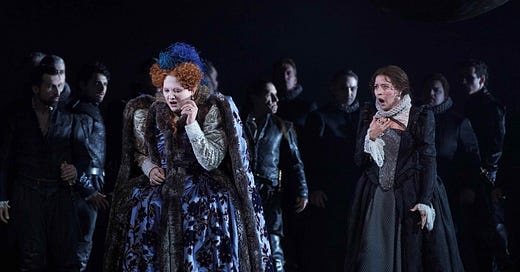Royal Rivals in Tudor England and Ancient Egypt
Donizetti's Maria Stuarda in Madrid, Verdi's Aïda in Oviedo
Vil bastarda!: Aigul Akhmetshina (Elisabetta) recoils from Lisette Oropesa (Maria) in the Queens’ operatic encounter Picture © Javier del Real/Teatro Real
It wasn’t until just over half a century ago that Donizetti’s Maria Stuarda began to make inroads into the international repertoire. The American soprano Beverley Sills made the first commercial recording, while the Spanish diva Montserrat Caballé and her Turkish contemporary Leyla Gencer did much to establish the opera in the theatre.
But it was a mezzo Queen of Scots, Janet Baker, who introduced me to Maria Stuarda. Although sung in English (at English National Opera), the performance made an indelible impression on my youthful imagination, thanks mainly to Baker and Pauline Tinsley’s equally unforgettable Elizabeth, but also to the conductor Charles Mackerras and a stylish John Copley production in exquisite sets and period costumes by Desmond Heeley.
Baker’s assumption of the title role paved the way for a series of mezzo Marias, particularly in the UK, where Ann Murray and Sarah Connolly among others followed in her footsteps. Elsewhere, soprano Marias have been the norm, in the recent past, anyway: Lenneke Ruiten in Brussels, Kristina Mkhitaryan in Amsterdam, Elsa Dreisig in Zurich, Pretty Yende in Naples.
Keep reading with a 7-day free trial
Subscribe to Operalogue to keep reading this post and get 7 days of free access to the full post archives.




